 Yasuyuki Ozeki/小関泰之
@ysozeki
Yasuyuki Ozeki/小関泰之
@ysozeki
TLでノーベル賞候補と話題になった香取先生について書く(勝手に敬愛してるので先生呼び。)ポスドク2年目、2006年の国際会議で初めて香取先生の講演を聞いた。名前も知らなかったし光格子時計の原理も理解できなかったが、その後世界中のグループが香取グループを追従する発表をしたことは理解した。
2018-09-24 13:40:29 Yasuyuki Ozeki/小関泰之
@ysozeki
Yasuyuki Ozeki/小関泰之
@ysozeki
その会議で香取先生がたまたま一人で食事をされていたので思い切って声をかけて色々お話しさせていただいた。自分もいつか、新しいアイデアで圧倒的に世界をリードする技術を作れたらいいのにな、と心から思った。光格子時計とは比べるのもおこがましいが今の自分の研究の原動力のひとつである。
2018-09-24 13:40:50 Yasuyuki Ozeki/小関泰之
@ysozeki
Yasuyuki Ozeki/小関泰之
@ysozeki
新しいアイデアで圧倒的に世界をリードするといえば、自分が博士課程のとき、菊池先生のディジタルコヒーレント通信が生まれる瞬間を真横で見たことの影響も大きい。自分はこの先何ができるだろうか。自分より若い世代に夢を与えられる存在になれるであろうか。
2018-09-24 13:41:16 Yasuyuki Ozeki/小関泰之
@ysozeki
Yasuyuki Ozeki/小関泰之
@ysozeki
(完全に研究関連のツイート)コヒーレントラマンの特集号がAPL Photonicsに出ています。Guest Editorとして携わりました。PerspectiveやTutorialはいずれもこの分野を俯瞰する上でオススメです。 bit.ly/2N77nlY
2018-09-28 12:58:22 The Nobel Prize
@NobelPrize
The Nobel Prize
@NobelPrize
This year’s #NobelPrize inventions revolutionised laser physics. Extremely small objects and incredibly fast processes now appear in a new light. Advanced precision instruments are opening up unexplored areas of research and a multitude of industrial and medical applications. pic.twitter.com/RZp78piSRF
2018-10-02 18:55:58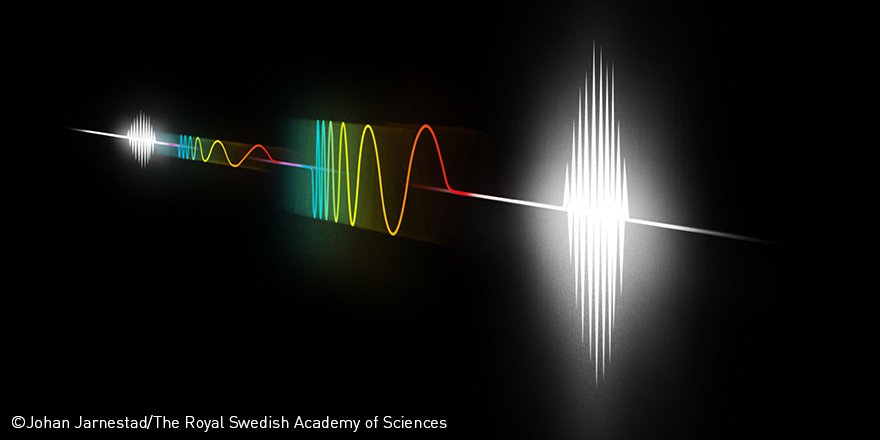 拡大
拡大
 The Nobel Prize
@NobelPrize
The Nobel Prize
@NobelPrize
Arthur Ashkin, awarded the 2018 #NobelPrize, had a dream: imagine if beams of light could be put to work and made to move objects. He realised his dream by creating a light trap, which became known as optical tweezers. pic.twitter.com/6W6juINq5f
2018-10-02 18:56:36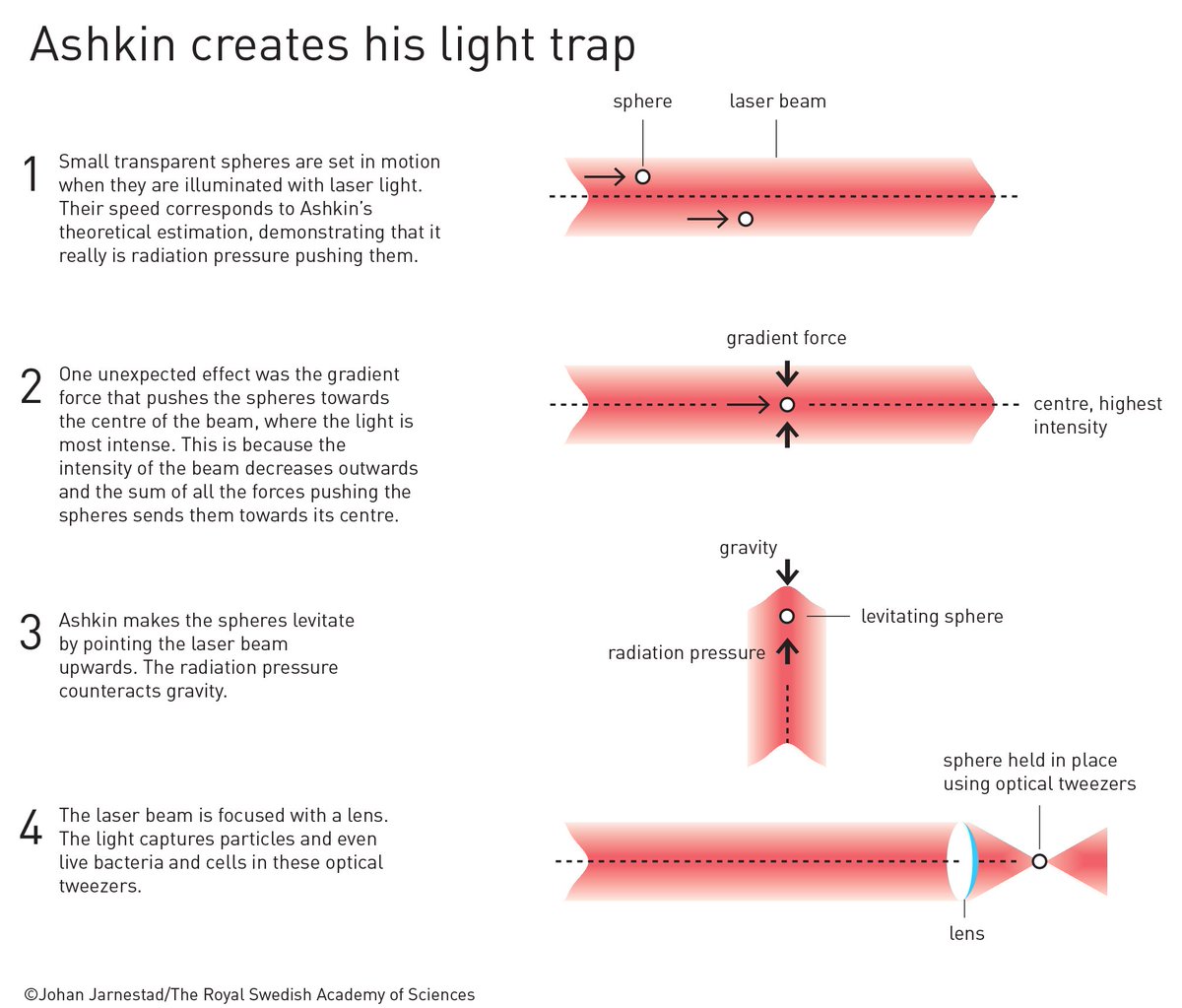 拡大
拡大
 The Nobel Prize
@NobelPrize
The Nobel Prize
@NobelPrize
Watch the moment the 2018 #NobelPrize in Physics is announced. Presented by Göran K. Hansson, Secretary General of the Royal Swedish Academy of Sciences. pic.twitter.com/EukMJmGrGo
2018-10-02 18:56:45 The Nobel Prize
@NobelPrize
The Nobel Prize
@NobelPrize
Ashkin’s optical tweezers grab particles, atoms and molecules with their laser beam fingers. They can examine and manipulate viruses, bacteria and other living cells without damaging them. New opportunities for observing and controlling the machinery of life have been created.
2018-10-02 18:57:04 The Nobel Prize
@NobelPrize
The Nobel Prize
@NobelPrize
Gérard Mourou and Donna Strickland – this year’s #NobelPrize recipients – paved the way towards the shortest and most intense laser pulses created by humankind. The technique they developed opened up new areas of research and led to broad industrial and medical applications. pic.twitter.com/KQYcbmW0tl
2018-10-02 18:59:04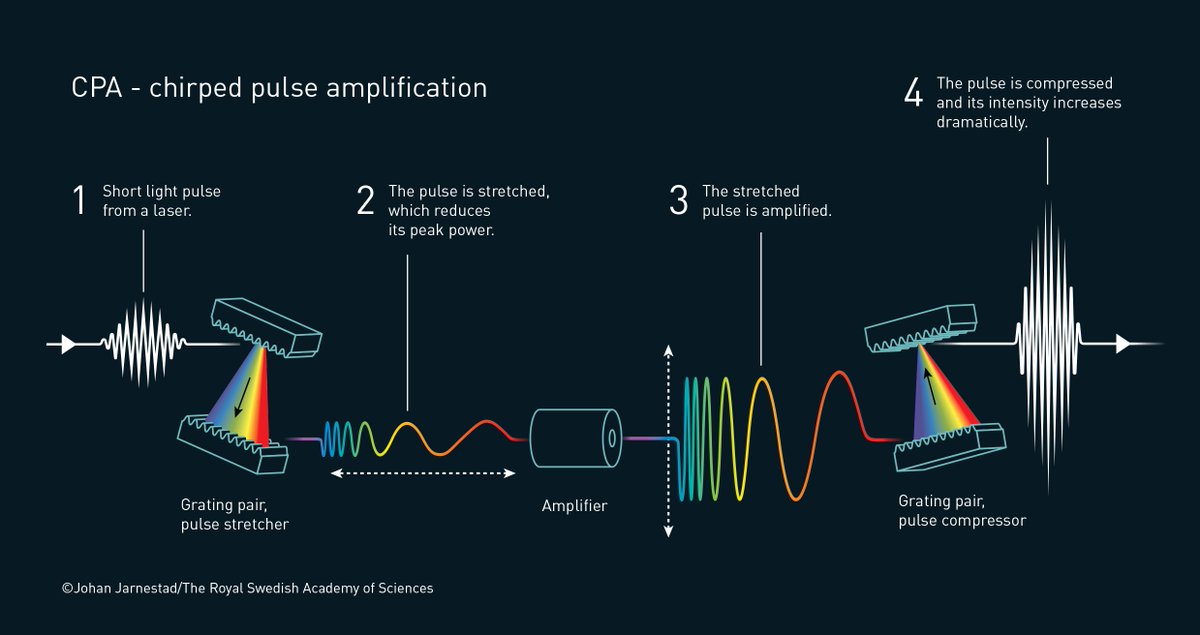 拡大
拡大
 The Nobel Prize
@NobelPrize
The Nobel Prize
@NobelPrize
Ultra-sharp laser beams make it possible to cut or drill holes in various materials extremely precisely – even in living matter. Millions of eye operations are performed every year with the sharpest of laser beams. #NobelPrize pic.twitter.com/MiYb4i8AHw
2018-10-02 19:00:10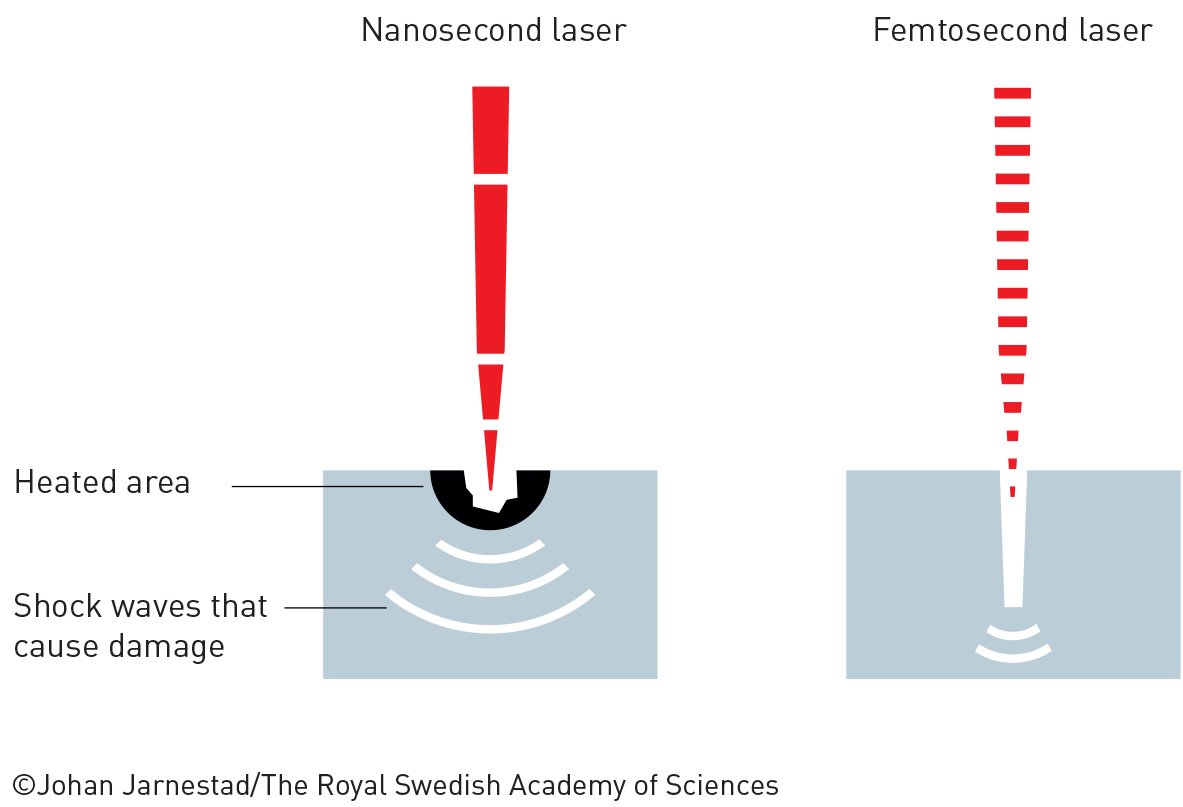 拡大
拡大
 The Nobel Prize
@NobelPrize
The Nobel Prize
@NobelPrize
“We need to celebrate women physicists because they’re out there… I’m honoured to be one of those women," says Donna Strickland. She becomes the third woman to receive the #NobelPrize in Physics, joining Maria Goeppert-Mayer (1963) and Marie Curie (1903). Congratulations! pic.twitter.com/m2XLJHTW0V
2018-10-02 19:41:48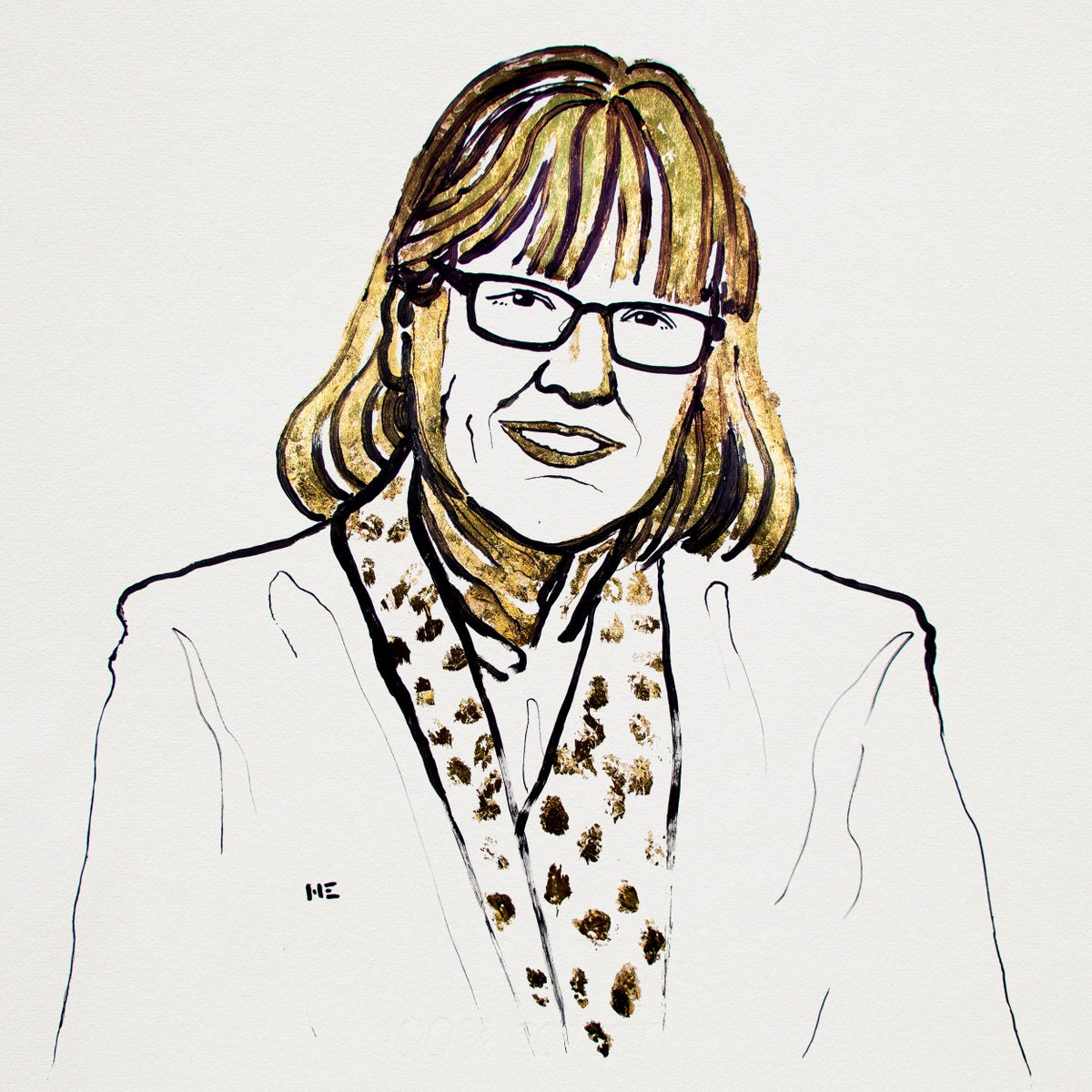 拡大
拡大
 The Nobel Prize
@NobelPrize
The Nobel Prize
@NobelPrize
Learn more about this year’s #NobelPrize in Physics. Press release: nobelprize.org/prizes/physics… Popular information: nobelprize.org/prizes/physics… Advanced information: nobelprize.org/prizes/physics… pic.twitter.com/aWw4505ph4
2018-10-02 20:29:03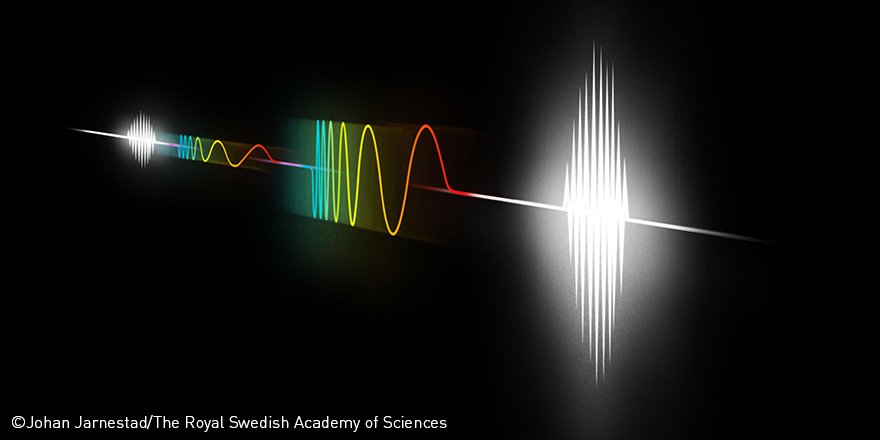 拡大
拡大
 The Nobel Prize
@NobelPrize
The Nobel Prize
@NobelPrize
Just in! Donna Strickland during an early morning interview for nobelprize.org, shortly after hearing the news that she had been awarded the #NobelPrize in Physics. Full telephone interview coming soon. Photo credit: Doug Dykaar pic.twitter.com/bdb1HXQI9s
2018-10-02 20:48:22 拡大
拡大
 The Nobel Prize
@NobelPrize
The Nobel Prize
@NobelPrize
"We scientists like to puzzle as to why something is working." Donna Strickland never worked as hard or had as much fun as when she was performing the research that led her to the 2018 #NobelPrize in Physics. Listen to full telephone interview: youtube.com/watch?v=tbbIJq…
2018-10-02 21:09:17 The Nobel Prize
@NobelPrize
The Nobel Prize
@NobelPrize
Congrats! Gérard Mourou immediately after receiving the news that he had been awarded the 2018 #NobelPrize in Physics. Credit: Mme Catherine Sarrazin pic.twitter.com/c87TamN75Q
2018-10-02 21:40:01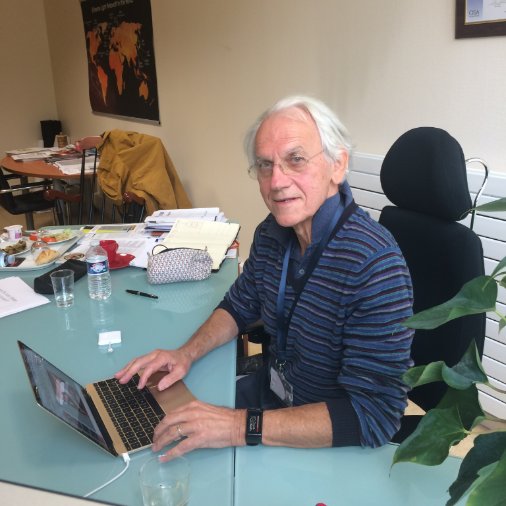 拡大
拡大
 Yasuyuki Ozeki/小関泰之
@ysozeki
Yasuyuki Ozeki/小関泰之
@ysozeki
1. 2018年ノーベル物理学賞の解説をします。光ピンセットと超短パルスレーザーというと自分より適任の方は日本にも大勢いらっしゃると思いますが。。。
2018-10-02 22:15:04 Yasuyuki Ozeki/小関泰之
@ysozeki
Yasuyuki Ozeki/小関泰之
@ysozeki
2. まず超短パルスレーザーのStrickland-Mourouから。1960年にレーザーが生まれ、従来の電球よりも圧倒的に強力な光の発生が可能となり、非線形光学など新しい光物理が生まれた。自分が顕微鏡に使っている現象「誘導ラマン散乱」は1962年の報告。
2018-10-02 22:15:20 Yasuyuki Ozeki/小関泰之
@ysozeki
Yasuyuki Ozeki/小関泰之
@ysozeki
3. ただし1960年代のパルス幅はナノ秒(ナノは10億分の1)。その後パルス幅は急激に短くなり、70年代にピコ秒(ピコは1兆分の1)パルスの発生が、80年代に6フェムト秒(フェムトは1000兆分の1秒)パルスの発生が報告された。
2018-10-02 22:15:36 Yasuyuki Ozeki/小関泰之
@ysozeki
Yasuyuki Ozeki/小関泰之
@ysozeki
4. 1秒間に地球を7周半する光であっても、6フェムト秒の間には2ミクロンしか進むことができない。可視光の光の1周期はおよそ2フェムト秒。光は電場と磁場の振動だが、それがわずか数回しか振動しないような究極的に短い光の発生技術が今から30年以上前に実現されたのである。
2018-10-02 22:15:47 Yasuyuki Ozeki/小関泰之
@ysozeki
Yasuyuki Ozeki/小関泰之
@ysozeki
5. 短いパルスが使えることには2つの意味がある。ひとつは超高速現象の計測ができること。高速に動く物体にフラッシュを焚けば静止写真が撮影できるように、フェムト秒の光を使うと、化学反応が始まる様子や、分子が振動する様子などの超高速現象を撮影できる。これにより物理化学の理解が深まった。
2018-10-02 22:16:38 Yasuyuki Ozeki/小関泰之
@ysozeki
Yasuyuki Ozeki/小関泰之
@ysozeki
6. もうひとつの意味は、光のエネルギーが非常に短い時間に閉じ込められるため、瞬時的に極めて高い光強度を発生できること。極めて高強度の光を物質やガスなどに照射すると、弱い光では生じないような様々な効果が生じえる。光による物質の破壊検査である。
2018-10-02 22:16:53 Yasuyuki Ozeki/小関泰之
@ysozeki
Yasuyuki Ozeki/小関泰之
@ysozeki
7. しかし、80年代のフェムト秒時代に入り、高強度化が極めて難しくなった。高強度レーザーの光によって、レーザー装置、特に光を増幅する材料であるレーザー媒質が壊れてしまうのである。その問題を解決したのがStrickland-Mourouにより提案されたCPA (chirped pulse amplification)。
2018-10-02 22:17:10 Yasuyuki Ozeki/小関泰之
@ysozeki
Yasuyuki Ozeki/小関泰之
@ysozeki
8. フェムト秒パルスは広いスペクトル幅を有するので、波長ごとに光の通り道を変えて波長ごとの光のタイミングをずらすことが容易にできる。このようにすると、光を時間的に引き伸ばし、その分ピーク強度を何桁も下げることができる。
2018-10-02 22:17:23 Yasuyuki Ozeki/小関泰之
@ysozeki
Yasuyuki Ozeki/小関泰之
@ysozeki
9. その状態で光を増幅し、増幅後に波長ごとの光のタイミングを再び合わせてやる。これがCPAである。CPAによってそれまでよりも圧倒的に高い光強度を得ることができるようになった。CPAは、現在売られている増幅器つきの超短パルスレーザーにはほとんど採用されている。
2018-10-02 22:17:35